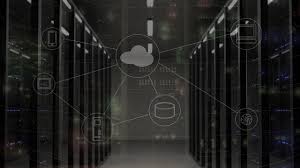
The technology stack is the foundation of any software as a service (SaaS) application. It is the combination of programming languages, frameworks, and tools that developers use to build and maintain software applications. Choosing the right tech stack is crucial for the success of a SaaS application as it can significantly impact the development process, the application’s performance, scalability, and maintainability. In this article, we will discuss the key factors to consider when choosing a tech stack for your SaaS application.
Understand Your Application Requirements
Before selecting a tech stack, it is essential to understand the requirements of your SaaS application. Identify the features and functionalities you want to include in your application, the expected user base, and the scalability and performance requirements. This information will help you determine the right tech stack that can meet your application’s needs.
Consider the Development Time
Development time is a crucial factor to consider when choosing a tech stack. Some tech stacks are faster to develop with than others. For instance, using a full-stack framework like Ruby on Rails, Django, or Laravel can speed up the SaaS development process as they come with pre-built modules and libraries. However, if you are building a complex application with specific requirements, you may need to consider a tech stack that offers more flexibility, even if it takes longer to develop.
Evaluate the Scalability
Scalability is an essential factor to consider when choosing a tech stack for your SaaS application. You want to ensure that your tech stack can handle the growth of your application. Consider a tech stack that can scale horizontally and vertically. Horizontal scaling involves adding more machines to handle the load, while vertical scaling involves adding more resources to the existing machines.
Assess the Performance
The performance of your SaaS application can significantly impact user experience. Consider a tech stack that can deliver high performance. Factors to consider include the response time, throughput, and the ability to handle concurrent users.
Consider the Maintenance and Support
Maintenance and support are critical factors to consider when choosing a tech stack. You want to ensure that the tech stack you choose has a strong community and active development. This will ensure that you can get help and support when you need it. Additionally, consider a tech stack that is easy to maintain and update.
Evaluate the Security
Security is a crucial factor to consider when choosing a tech stack for your SaaS application. Consider a tech stack that has built-in security features and is regularly updated to address security vulnerabilities.
Think About the Cost
The cost of the tech stack is also an essential factor to consider. Some tech stacks are open-source and free, while others are proprietary and require licensing fees. Consider the long-term costs of maintaining and scaling your application with the chosen tech stack.
Consider the Developer Experience
The developer experience is an essential factor to consider when choosing a tech stack. Consider a tech stack that is easy to learn and use, and that has a large pool of developers to hire from. This will ensure that your development process is smooth and efficient.
Evaluate the Integration Capabilities
Your SaaS application may need to integrate with other tools and services. Consider a tech stack that has good integration capabilities with third-party services.
Test and Iterate
Finally, it is essential to test and iterate your tech stack. Start with a minimum viable product (MVP) and test it with real users. Use the feedback to improve your tech stack and add features as needed.
Conclusion
Choosing the right tech stack for your SaaS application is a critical decision that can impact the success of your application. Consider the factors discussed in this article, including the application requirements, development time, scalability, performance, maintenance and support, security, cost, developer experience, integration capabilities, and testing and iteration. By considering these factors, you can choose a tech stack that meets your application’s needs and sets you up for success.






